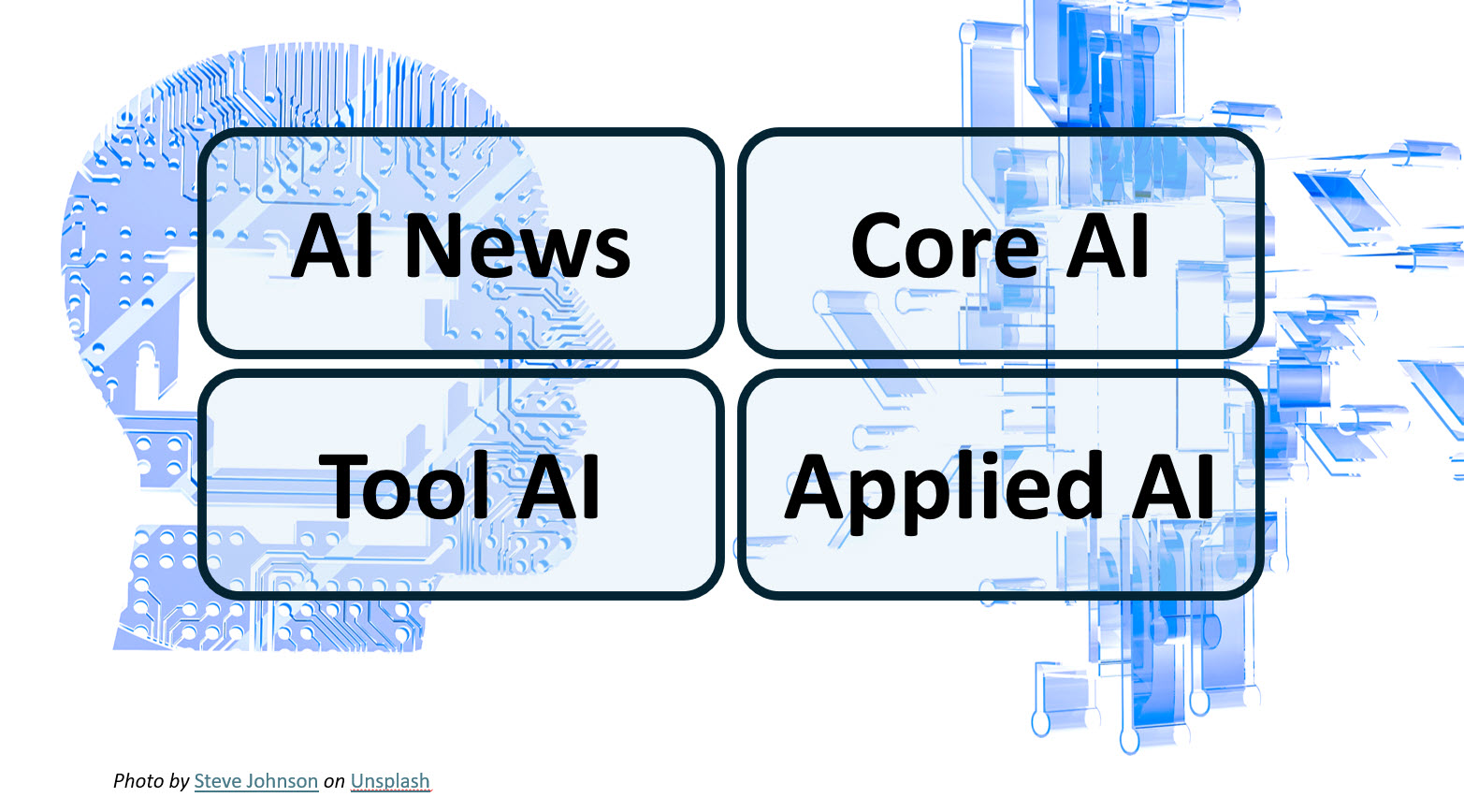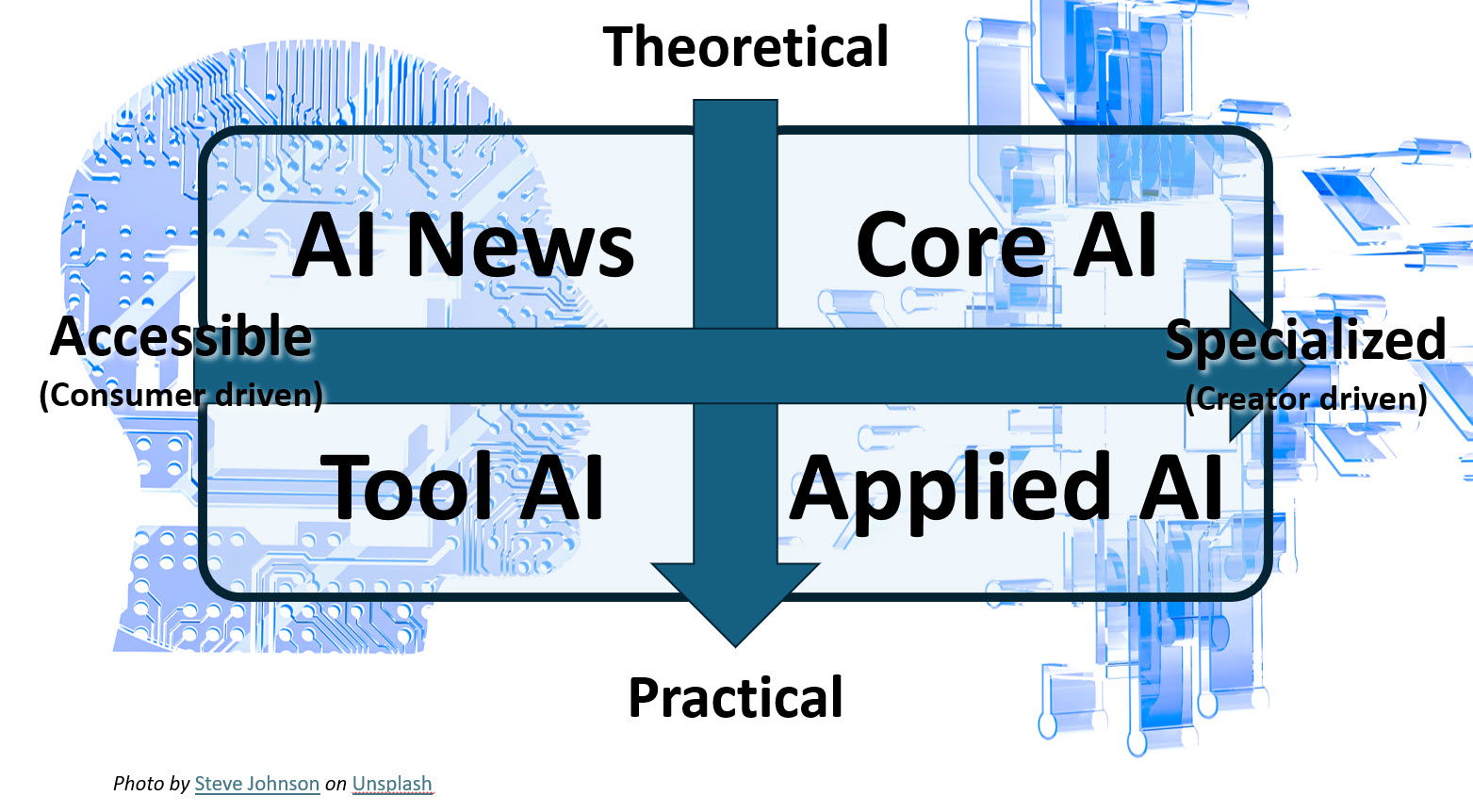AI for Nonprofits: 4 Quadrants to Cut Through the Noise
How Nonprofits Can Think About AI
Breaking It Down Into 4 Clear Quadrants
AI feels like it's everywhere, and nowhere, all at once. If you're leading a nonprofit, chances are you've asked yourself:
“Should we be doing something with AI?”
Or maybe:
“Is AI a threat to our work, or a tool we should embrace?”
Those are fair, and timely, questions.
But here’s the problem: AI is too broad a term. It’s like saying “technology” or “the internet”, without any context, it can mean everything and nothing at the same time.
That’s why a recent framework from a conversation between ServiceReef and EC Group was so helpful. It breaks down AI into four clear quadrants, and this simple model may help your nonprofit finally wrap its head around where you are… and where you might want to go next.
🎯 The Four Quadrants of AI

1. News Cycle AI – “I keep hearing about it…”
This is where most nonprofit executives and board members start. You’re reading the headlines. You’re seeing terms flying around LinkedIn or seeing new benchmarks based on new models posted on social media. You're aware that AI is shaking up industries, but you're not quite sure how or where it applies to your mission-driven world.
In reality, while this News Cycle AI quadrant is key for those that are living in this space, it’s mainly a philosophical conversation on an industry that is being built as it grows. As a leader in the non-profit space, it’s important to have conversations and be aware of what is going on, but it is very difficult to base any decisions with information only in this quadrant as the news changes so quickly.
What this looks like in your org:
- Board members or donors ask, “Are you using AI?” or “What is your AI strategy?”
- Typically, there is internal curiosity but no clear use cases.
- Fear of being left behind, but no roadmap on how this could drive you forward.
What to do here:
- Personally acknowledge that most questions and information is related to this space.
- If important to your organizational strategy, then look to methods to stay on top of it. Some examples:
- Assign someone to curate AI news relevant to your mission.
- Review monthly or quarterly as a 5 minute update.
- Hold a “Lunch & Learn” or team roundtable to unpack key trends.
- Watch and wait, but don’t stay here forever.
2. Tool AI – “We use AI to make our jobs easier”
Tool AI is where individuals begin to use AI-powered tools to enhance their productivity. This might be your comms director using their preferred AI model to write a donor newsletter draft, or your ops team using AI to summarize board reports.
What this looks like in your org:
- Staff using AI for writing, editing, summarizing, image generation, or even data cleanup.
- Tools like ChatGPT, Gemini, Notion AI, Grammarly, Midjourney, and DALL·E are in casual use.
What to do here:
- Encourage responsible experimentation, maybe even create an “AI Locker” (a shared doc where staff list tools and how they’ve used them).
- Start conversations around ethical boundaries (e.g., where AI shouldn’t be used, privacy concerns, etc.).
- Empower your team to save time on repetitive tasks, just don’t outsource your values.
- Leverage your prompts to look for gaps (e.g. what topics might we be missing in an upcoming meeting, etc).
3. Applied AI – “We’ve embedded AI into how we work”
This is where things get interesting… and tricky. Applied AI is not just using tools, it’s integrating AI into your workflows. It might mean using AI to screen volunteer applications, match mentors and mentees, or automatically route prayer requests to the right care team.
What this looks like in your org:
- Custom automations using AI models (e.g., tagging photos, categorizing emails, routing requests). Think “If A, then B” but instead of people/volunteers doing it, the agent does it for you automatically.
- Early experiments in building your own AI agents or using RAG (retrieval-augmented generation).
- Strategic conversations about what data could (and should) be leveraged.
What to do here:
- Identify pain points in your current workflow (e.g., repetitive review processes, follow-up tasks).
- Work with tech partners or consultants to explore AI-augmented solutions.
- Start small, measure impact, and scale what works.
⚠️ Note: This quadrant is where many nonprofits feel lost. That’s normal. Even seasoned tech companies are still figuring it out. This area will continue to expand in the coming years, making it easier on the non-technical folks to leverage this quadrant to drive initiatives forward.
4. Core AI – “We’re building with AI from the ground up”
Core AI is the realm of model creators, those building foundational language models, fine-tuning large models on their own data, or hosting custom inference servers. This area gets a lot of the news cycle mentioned earlier, but is rarely where nonprofits need to be, unless your mission is tech-centric.
What this looks like in your org:
- You’re fine-tuning your own LLM.
- You’re running models locally due to privacy needs.
- You’re building an AI-based product or service as part of your core mission (e.g., a nonprofit doing AI-powered language translation for Bible access).
What to do here:
- Avoid unless it’s mission-critical or you have an R&D grant specifically for it.
- If you must go here, build with trusted partners, hire experienced staff, and plan for sustainability.
Understanding the Quadrants

Going a bit deeper at the risk of over-simplifying the current environment: You can think of the four AI quadrants as moving along two dimensions:
- Theoretical → Practical: On one end you have concepts and headlines (Theoretical), and on the other, real-world workflows and systems (Practical).
- Accessible (Consumer-Driven) → Specialized (Creator-Driven): Some AI is easy to jump into with little to no expertise (Accessible), while other types require technical depth, custom development, or dedicated partners (Specialized).
Plotted together, these two dimensions give us the four quadrants:
- News AI → Theoretical + Accessible
- Tool AI → Practical + Accessible
- Applied AI → Practical + Specialized
- Core AI → Theoretical + Specialized
This framework helps nonprofits see that they don’t need to “do it all.” Most will thrive in the Accessible + Practical space, using tools and small applied workflows, without needing to dive into the complexities of Core AI.
🧭So... Where Should You Start?
Most nonprofits will look at this and think that they need to journey through these quadrants in order:
News AI → Tool AI → Applied AI → Core AI
But here’s the good news: most nonprofits will never need to get beyond Tool AI (or maybe Applied AI) and that’s perfectly okay.
Your mission isn’t to chase every shiny new AI announcement or to compete with the companies building massive language models. Your mission is to serve people, build community, and create lasting change. If AI can help you do that more effectively (by saving staff time, improving communication, or automating repetitive tasks) then it’s already serving its purpose.
Think of it this way:
- News AI → stay informed just enough to know what’s happening. Don’t get consumed by the hype.
- Core AI → almost never worth your time unless your nonprofit is uniquely positioned to build tech as part of your mission.
Instead, put your energy into:
- Tool AI → empower your team to save time and sharpen their impact. Hire or encourage employees that can leverage AI for specific tasks (e.g. create video content, blogs, engage donors, etc.)
- Applied AI → If you’re really leveraging tools well, then progress by identifying the 1–2 areas where automation or intelligent workflows could radically free up resources or expand reach.
Everything else is background noise. The real question is: how does AI help drive your mission forward today? If you stay focused on that, you’ll avoid distraction and find the practical wins that actually matter.
🕊 A Final Word for Faith-Based Nonprofits
If you’re a faith-based organization, you may be approaching AI with caution, and rightly so. AI raises ethical, theological, and relational questions that shouldn’t be ignored.
But here’s the truth: AI isn’t going away. And just like previous tech revolutions (printing press, radio, social media), the question isn’t if it will affect your work, but how you will steward it.
What if we used AI to free up time for deeper connection?
What if AI helped us reach people faster, understand needs better, and multiply our impact without burning out our teams?
These are not just tech questions. They’re leadership questions. Stewardship questions. Kingdom questions.
And they’re worth asking.
🚀 What Quadrant Are You In?
So here’s the real question: Which quadrant are you spending most of your time in right now?
- Are you still swimming in News AI, curious but overwhelmed?
- Experimenting with Tool AI in your daily work?
- Dabbling with Applied AI and wondering what to automate next?
- Or maybe just curious about the mysteries of Core AI?
Wherever you are, you’re not alone. Most nonprofits are asking the same questions and navigating this same learning curve. The best way forward isn’t to go it alone, it’s to walk together in community.
Where do you find yourself? Does any element of this resonate with your journey or experience? Share below what you’re learning.
Because AI isn’t just a technology shift; it’s a leadership and stewardship conversation. And the more we learn from each other, the better we’ll be at keeping the focus on what matters most: our mission.
Related Content




Comments